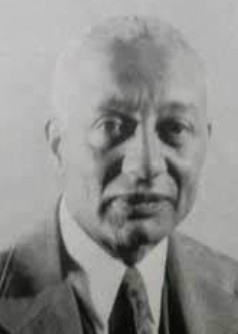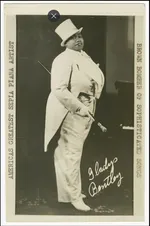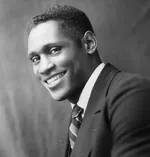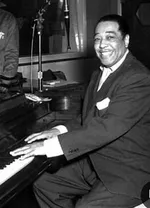
Out of the American experience of disenfranchisement[1], The Harlem Renaissance[2], spanning the 1920s and 1930s was an intellectual and cultural expression of Black artistry. Centered in Harlem, Manhattan, New York it included disciplines such as writing, poetry, music, acting, art, dance, fashion design, literature, politics, theatre and more. Dispelling old racial images and stereotypes it showcased the depth of strength and expression previously overlooked and under rated by White America.
Research your ancestors on MyHeritage
CatalystCatalyst
Segregated American communities such as Harlem benefitted from the large influx of Southern African Americans to Northern cities, known as the Great Migration[3]. Fueled by the blending of different experiences and cultural backgrounds, the movement gave rise to the interaction of viewpoints, creativity, growth, self-love, expression and the examination of the impact of racial biases.
InfluencersInfluencers



With this focus, the period saw a significant output by African Americans across genres. Some of the names tied to the period include:
- Cyril Briggs - Eastern Caribbean-born American civil rights activist and journalist
- Louis Armstrong - American born ground-breaking jazz musician
- Gladys Bentley - American born singer, blues pianist, performer – aka The Sepia Bomber
- Paul Robeson - American born bass-baritone concert artist, actor, professional football player, and activist
- Bessie Smith- American born blues and jazz vocalist, AKA The Empress of the Blues
- Langston Hughes- One of the first Black Americans to earn a living as a writer, he was also a poet, social activist and columnist for the Chicago Defender[4]
- Marcus Garvey - Jamaican born activist and founder of the Universal Negro Improvement Association (UNIA)
- Zora Neale Hurston - American born author, anthropologist
- Countee Cullen - Jamaican born American poet, children's writer and playwright
- Jessie Redmon Fauset - American born essayist, novelist and poet aka Midwife of the Harlem Renaissance, literary editor of the Crisis[5]
- Jean Toomer - American born poet, playwright, and novelist
- Nella Larsen - novelist and short-story writer
- Ma Rainey - American born singer, AKA The Mother of Blues
- James Van Der Zee - American born photographer. best known for his portraits of black New Yorkers
- Edward Kennedy "Duke" Ellington- American born musician, composer and bandleader
- Alain Locke - American born writer, philosopher, and educator
- W.E.B. DuBois[6] - American born activist, one of the founders of the NAACP[7] along with Ida B. Wells[8] and Mary White Ovington[9], believer in Pan-Africanism[10], and editor of The Crisis
Throughout the years, the importance of The Harlem Renaissance has been celebrated as were its influencers. Exhibits such as the "Harlem Renaissance: Art of Black America," 09/24/88 through 11/20/88 at the Bowdoin College Museum of Art pay homage to the movement.
See alsoSee also
Explore more about the Harlem RenaissanceExplore more about the Harlem Renaissance
- Great Migration. Encyclopedia Britannica
- Louis Armstrong House Museum
- PBS. American Masters
- Louis Armstrong Educational Foundation
- Langston Hughes. Biography.com
- Jessie R. Fauset. Blackpast.org
- Universal Negro Improvement Association. CALS. Encyclopedia of Arkansas.
- Zora Neale Hurston National Museum
- Jessie Redmon Fauset, American Author. Encyclopedia Britannica
- Alain Locke's Historical Influence on Society
- Alain Locke. Biography.com
- Hutchins Center for African & African American Research
- Du Bois, W. E. B.. American National Biography
- Its Lit. Literary Icons You Need to Know from the Harlem Renaissance. PBS
References
- ↑ https://www.merriam-webster.com/dictionary/disenfranchise
- ↑ https://nmaahc.si.edu/explore/stories/new-african-american-identity-harlem-renaissance#:~:text=Alain%20Locke%2C%20a%20Harvard%2Deducated%20writer%2C%20critic%2C%20and,sculpture%2C%20jazz%20and%20swing%2C%20opera%20and%20dance
- ↑ https://www.history.com/topics/black-history/great-migration
- ↑ Remembering the Chicago Defender, Print Edition (1905 - 2019). National Museum of African American History and Culture
- ↑ History of The Crisis
- ↑ https://www.history.com/topics/black-history/w-e-b-du-bois
- ↑ https://www.britannica.com/summary/Harlem-Renaissance-Timeline
- ↑ https://www.womenshistory.org/education-resources/biographies/ida-b-wells-barnett
- ↑ Mary White Ovington Biography: Founding the NAACP
- ↑ https://www.britannica.com/topic/Pan-Africanism

